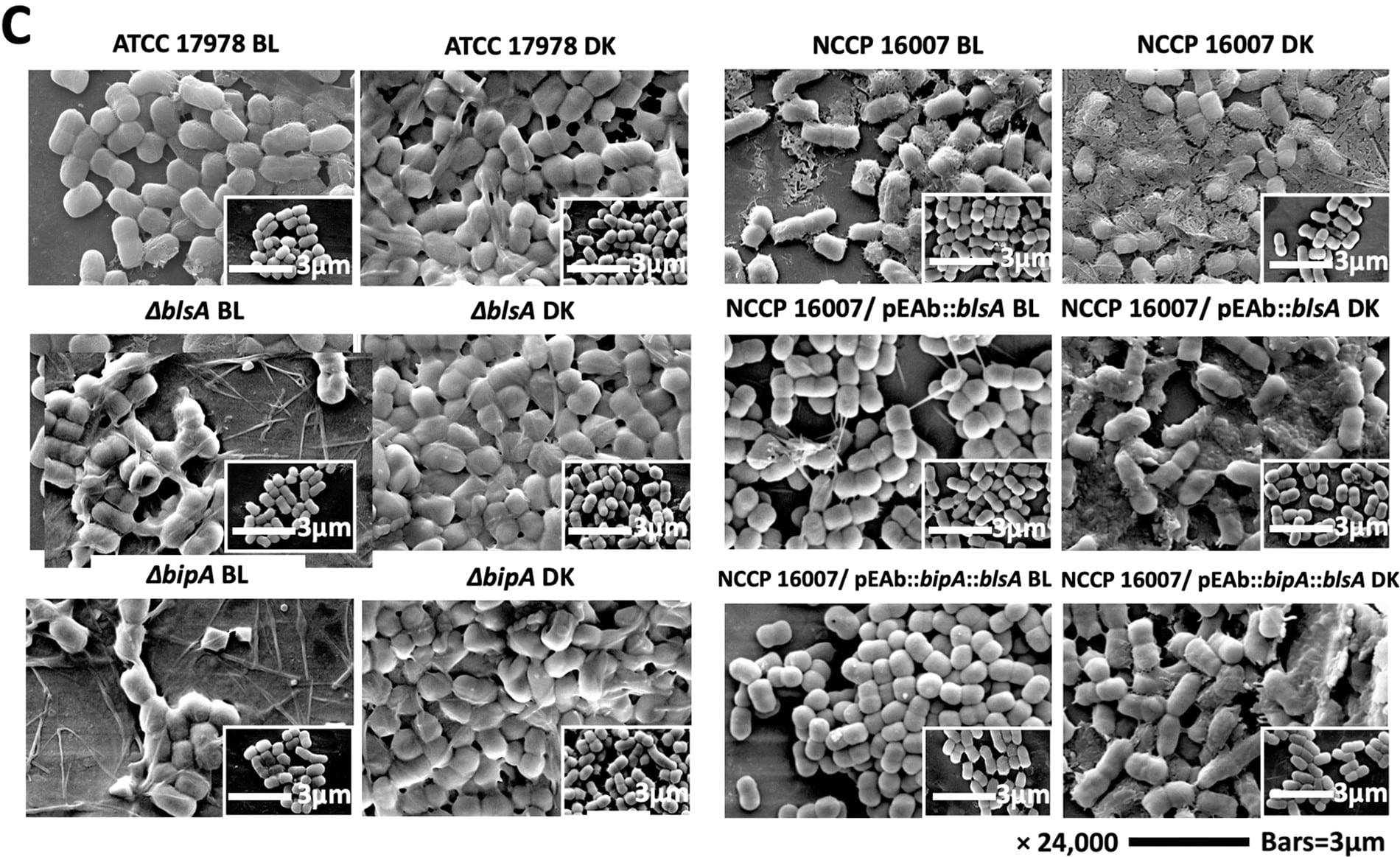Jihye Yang, Sohyeon Yun, Woojun Park
Published: 9 January 2023 | Bacteriology

Abstract
The presence or absence of BlsA, a protein with a blue light-sensing flavin domain in the genomes of Acinetobacter species has aroused curiosity about its roles in the regulation of bacterial lifestyle under light. Genomic and transcriptomic analyses revealed the loss of BlsA in several multidrug-resistant (MDR) A. baumannii strains as well as the light-mediated induction of blsA, along with a possible BlsA-interacting partner BipA. Their direct in vivo interactions were verified using a bacterial two-hybrid system. The results demonstrated that the C-terminal region of BipA could bind to the C-terminal residues of BlsA under blue light at 23°C but not at 37°C. Genetic manipulations of blsA and bipA revealed that the coexistence of BlsA and BipA was required to induce the light-dependent expression of ompA in A. baumannii ATCC 17978 at 23°C. The same phenomenon occurred in the BlsA-deficient MDR strain in our functional complementation assay; however, the underlying molecular mechanism remains poorly understood. BlsA-modulated amounts of OmpA, the most abundant porin, in the outer membrane affected the membrane integrity and permeability of small molecules. Dark conditions or the deletion of ompA made the membrane more permeable to lipophilic ethidium bromide (EtBr) but not to meropenem. Interestingly, light illumination and low temperature conditions made the cells more sensitive to meropenem; however, this bactericidal effect was not noted in the blsA mutant or in the BlsA-deficient MDR strains. Light-mediated cell death and the reduction of biofilm formation at 23°C were abolished in the blsA mutant strain, suggesting multifaceted roles of BlsA in A. baumannii strains.
Little is known about the functional roles of BlsA and its interacting partners in Acinetobacter species. Intriguingly, no BlsA homolog was found in several clinical isolates, suggesting that BlsA was not required inside the host because of the lack of blue light and the warm temperature conditions. As many chromophore-harboring proteins interact with various partners to control light-dependent cellular behaviors, the maintenance of blsA in the genomes of many Acinetobacter species during their evolution may be beneficial when fluctuations occur in two important environmental factors: light and temperature. Our study is the first to report the novel protein partner of BlsA, namely, BipA, and its contribution to multiple phenotypic changes, including meropenem resistance and biofilm formation. Rapid physiological acclimation to changing light or temperature conditions may be possible in the presence of the light-sensing BlsA protein, which may have more interacting partners than expected.
… Blue light treatments were performed using a custom LED lamp that emitted light at an intensity of 0 to 80 W/m2, with the emission peaks ranging from 400 to 470 nm and centered at 462 nm (14, 51, 52). The wavelength was determined using a BLACK-Comet-SR Spectrometer (StellarNet, USA) with SpectraWiz Spectroscopy software (StellarNet) and SpectraWiz LabVIEW Software (StellarNet). Blue light susceptibility tests were performed on LB agar plates inoculated with 107 CFU/mL of each strain, with the light intensity ranging from 0 to 16 W/m2 …





